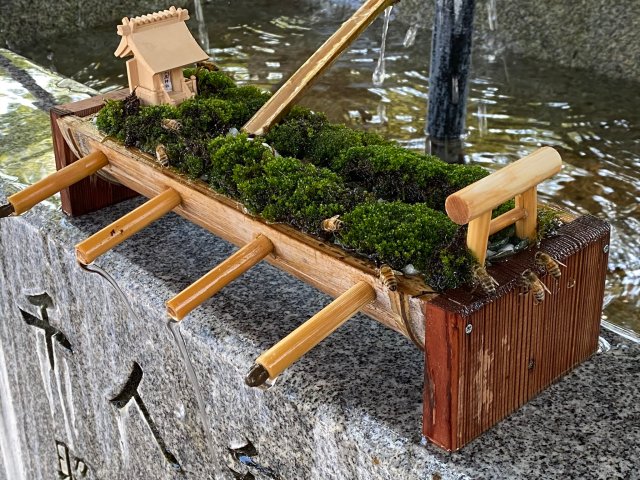
Sweet act of kindness melts everyone’s hearts.
In Japan, Shinto shrines are usually shady spots, shrouded with large trees and leafy plants that attract all sorts of visitors, including non-human ones like cats and insects.
Up in Ibaraki Prefecture, a shrine called Hitokotonushi has become particularly popular with the local bee population, who’ve been visiting the temizu-ya (Shinto water ablution pavilion) on the grounds to quench their thirst during summer.
Rather than shun the winged insects, staff at the shrine have chosen to care for them in a remarkable way instead. In keeping with Shinto’s respect for nature, all living creatures are to be revered and respected, and these honeybees are now amongst the most spoiled in the country, because the shrine has installed a gorgeous miniature drinking fountain especially for them.
As the above photo shows, the bees no longer have to cling precariously to the edge of the large water trough to get a sip of water — they can now quench their thirst in a more secure position, atop two mounds of wet moss.
It’s a win-win for everyone using the temizu-ya, as not only do the bees get to hydrate themselves in the heat of summer, it also helps to keep the insects separated from human users, and although they’re still in close proximity to people at the fountain, staff have added a sign to let visitors know the bees are gentle and rarely sting unless provoked.
The sign above reads:
“To those using the temizu,
Honeybees in the neighbourhood are currently coming to the shrine to drink water. We are now guiding the bees to their own exclusive water drinking spot.
They have a very gentle disposition so they rarely sting.
Please look over them warmly without provoking them.”
The bees have been loving their drinking spot so much the shrine even installed a second fountain a short distance from the one seen above, to help the bees maintain “proper social distancing”.
The new drinking fountain is possibly even more beautiful than the first, with its depiction of a miniature shrine, complete with torii shrine gate and a pebble-lined pathway down the middle.
▼ The bees now look like busy workers at a shrine.
The second fountain also has its own sign, repeating the same message to visitors as before, with the addition of a cute four-panel illustration drawn by one of the miko shrine maidens.
In the first panel, the bee appears to be sweltering in the heat, saying “I’m hot“, before it discovers the bee drinking fountain and says, “What’s this!?” As the bee draws closer, happy honeybees can be seen on the moss, expressing their excitement as the flying bee says “This helps.” The comic ends with the bee telling the reader: “I’m not scary. Please be nice.”
▼ And as it turns out, bees aren’t the only ones enjoying the refreshment of the mossy water fountain.
As soon as the shrine shared images of the drinking fountain on its official Twitter account, they quickly went viral as people’s hearts swelled with joy at the kind gesture.
【久々のミツバチ専用水飲み場】
— 一言主神社 (@hitokoto0913) July 21, 2021
暑くなるとミツバチさんが団体で手水舎に水を飲みに来ます。
ここ数年はいらっしゃいませんでしたが、今年は久々の後来社。
専用水飲み処を作りましたので暖かく見守っていただければ幸いです。#ミツバチ #水飲み場 #一言主神社 pic.twitter.com/bautexLcuc
Comments included:
“They look so cute!”
“Such a fantastic idea!”
“The bees must love this!”
“What a kind world.”
“What a wonderful shrine!”
It truly is a wonderful gesture of kindness between humans and Mother Nature, and as it turns out, the shrine has been creating fountains like this for local bees at the water fountain since at least 2016.
▼ The 2016 terracotta setup is far more simple than the more intricate, beautifully decorated drinking spots enjoyed by the bees today.
It’s nice to know the local bees are continuing to enjoy this shaded drinking spot year after year, sharing some respite from the summer heat peacefully with the shrine’s human visitors. It’s one of the many reasons why we love Japanese shrines…and their gorgeous water features!
Shrine information
Hitokotonushi Shrine / 一言主神社
Address: Ibaraki-ken, Joso-shi, Otsukatomachi 875
茨城県常総市大塚戸町875
Source: Twitter/@hitokoto0913 via Net Lab
Featured image: Twitter/@hitokoto0913
Insert images: Twitter/@hitokoto0913 (1, 2, 3, 4, 5)
● Want to hear about SoraNews24’s latest articles as soon as they’re published? Follow us on Facebook and Twitter!

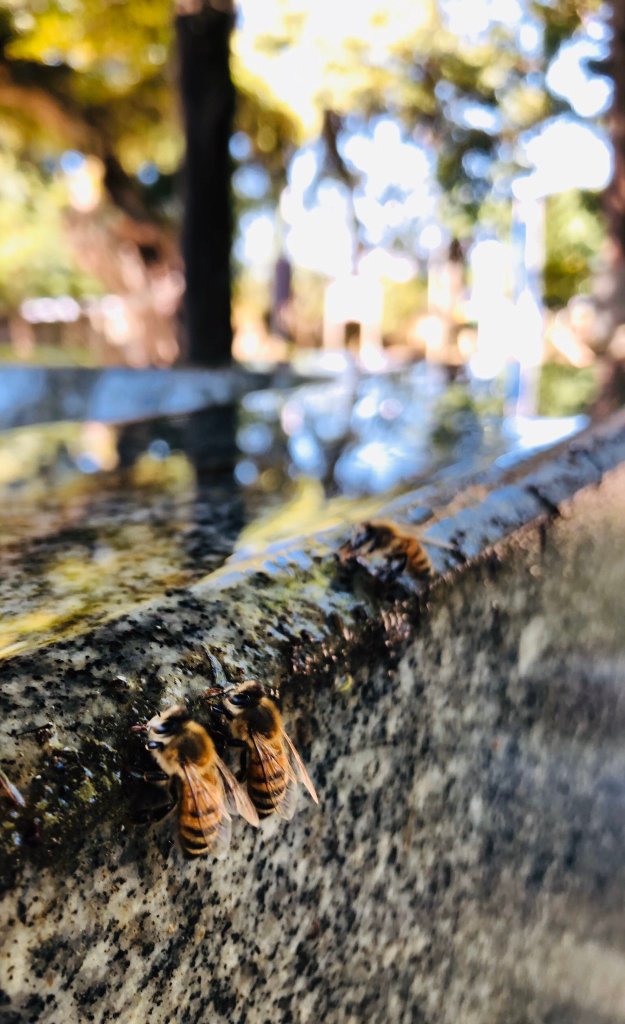
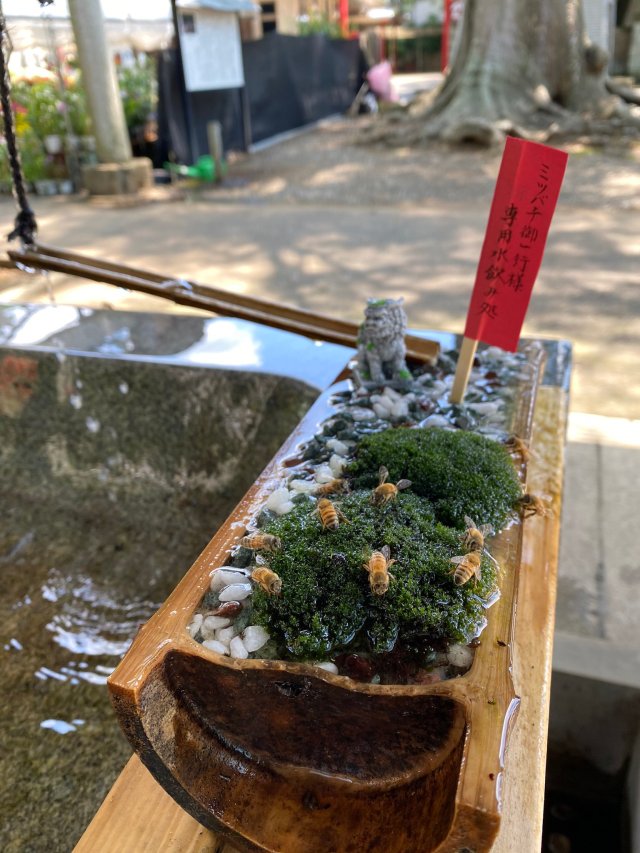
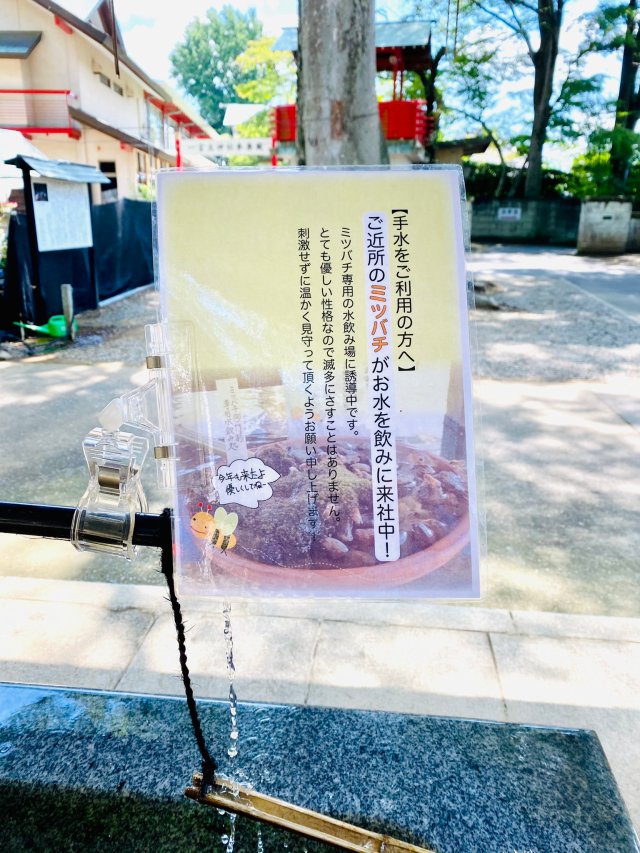
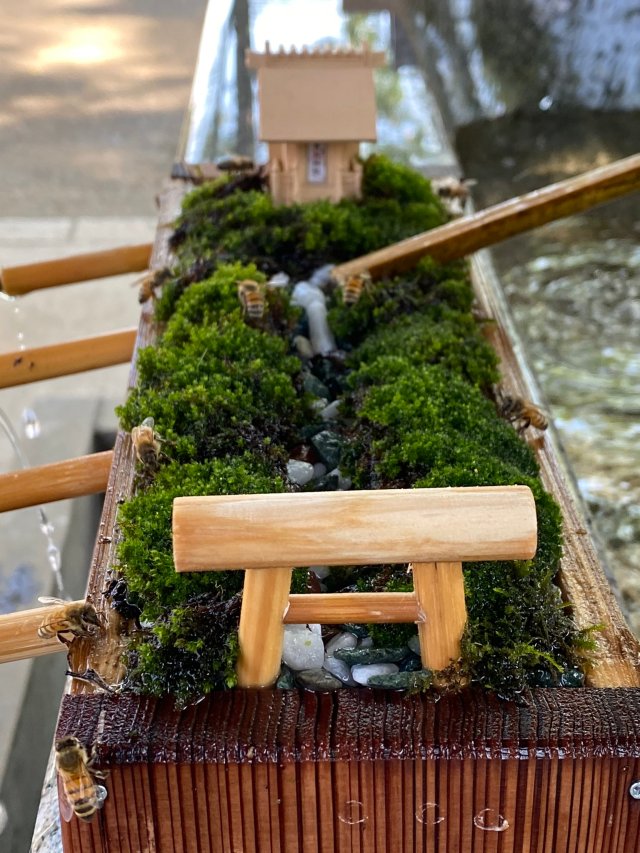
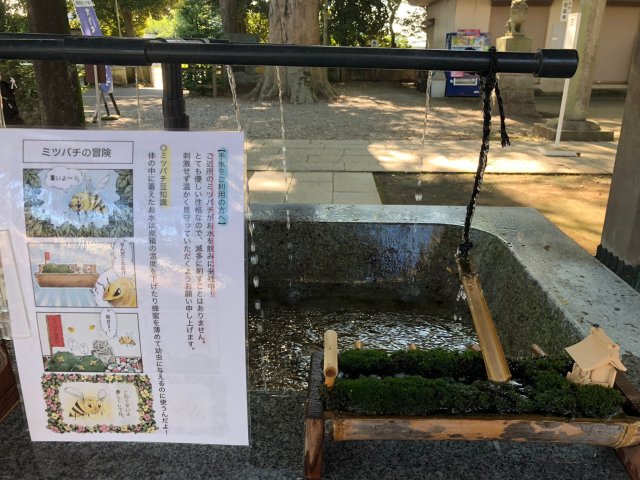
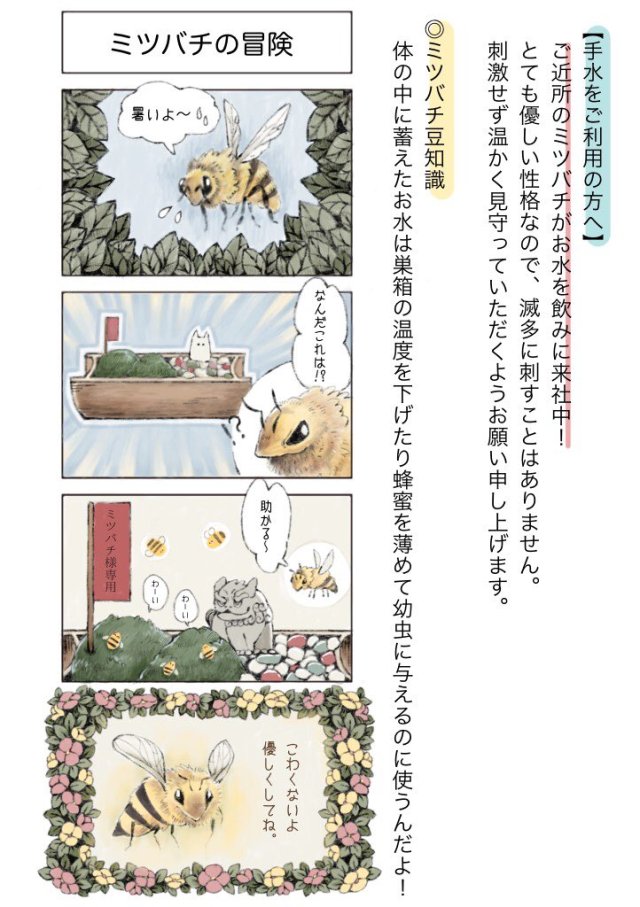
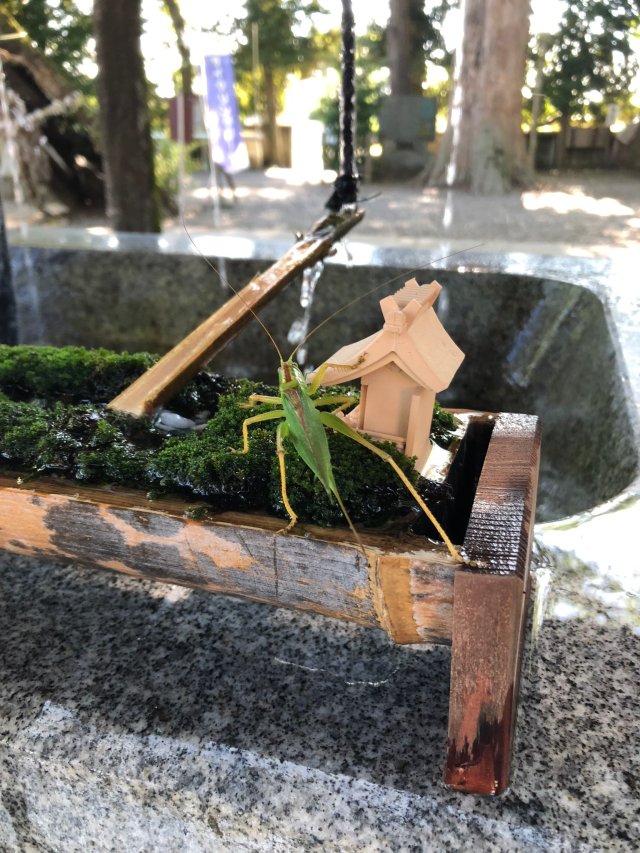
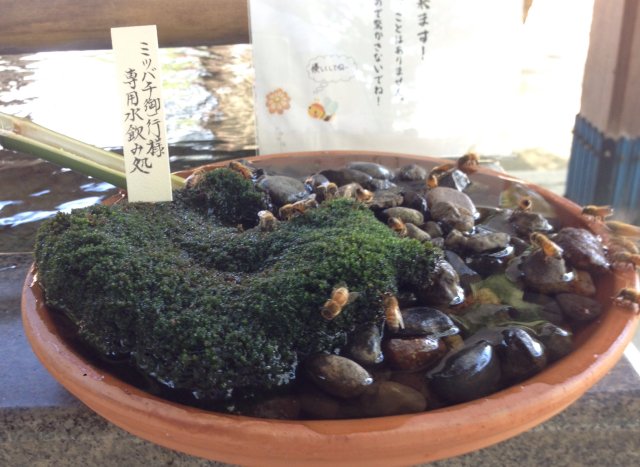
 Japanese shrine’s special drinking spot for bees has the internet feeling the warm fuzzies
Japanese shrine’s special drinking spot for bees has the internet feeling the warm fuzzies Starbucks Japan releases new drinkware and goods for Valentine’s Day
Starbucks Japan releases new drinkware and goods for Valentine’s Day Almost exactly half of the new adults in Tokyo’s Shinjuku Ward are foreigners
Almost exactly half of the new adults in Tokyo’s Shinjuku Ward are foreigners Japan’s plum blossom season is here, and after-dark garden is one of the best spots to see them
Japan’s plum blossom season is here, and after-dark garden is one of the best spots to see them Hayao Miyazaki comments on Chihiro’s final test scene in Spirited Away
Hayao Miyazaki comments on Chihiro’s final test scene in Spirited Away Imperial Hotel Tokyo offers crustless bread…in the sense that it never had crust to begin with
Imperial Hotel Tokyo offers crustless bread…in the sense that it never had crust to begin with We buy a cheap Japanese mini van to go with our crazy cheap country house 【SoraHouse】
We buy a cheap Japanese mini van to go with our crazy cheap country house 【SoraHouse】 British newspaper ranks the best Studio Ghibli films and reader passions flare
British newspaper ranks the best Studio Ghibli films and reader passions flare A feast for all sushi lovers — the amazing 1,000-yen lunch at Sushi Takehan Wakatsuki!
A feast for all sushi lovers — the amazing 1,000-yen lunch at Sushi Takehan Wakatsuki! Village Vanguard’s most expensive Black Lucky Bag sets an ominous tone for 2026
Village Vanguard’s most expensive Black Lucky Bag sets an ominous tone for 2026 Japan’s foreign tourist numbers projected to fall for first time in years in 2026
Japan’s foreign tourist numbers projected to fall for first time in years in 2026 10 times to avoid traveling in Japan in 2026
10 times to avoid traveling in Japan in 2026 Our 52-year-old pole dancing reporter shares his tips for achieving your New Year’s exercise goal
Our 52-year-old pole dancing reporter shares his tips for achieving your New Year’s exercise goal Starbucks Japan releases new Frappuccino and latte for Valentine’s Day
Starbucks Japan releases new Frappuccino and latte for Valentine’s Day Ramen restaurant’s English menu prices are nearly double its Japanese ones, denies discriminating
Ramen restaurant’s English menu prices are nearly double its Japanese ones, denies discriminating Princess Mononoke magnets return just in time to treat yourself to awesome anime decorations
Princess Mononoke magnets return just in time to treat yourself to awesome anime decorations Umamusume anime girl plushie recalled for having parts she absolutely should not have【Pics】
Umamusume anime girl plushie recalled for having parts she absolutely should not have【Pics】 Giant hotel rooms in Osaka reflect the new non-niche face of travel in Japan.
Giant hotel rooms in Osaka reflect the new non-niche face of travel in Japan. Japanese women showing rebounding interest in giving Valentine’s Day chocolate【Survey】
Japanese women showing rebounding interest in giving Valentine’s Day chocolate【Survey】 We ate sushi made from Japan’s most expensive tuna ever【Taste test】
We ate sushi made from Japan’s most expensive tuna ever【Taste test】 Starbucks Japan ready to get Year of the Horse started with adorable drinkware and plushies【Pics】
Starbucks Japan ready to get Year of the Horse started with adorable drinkware and plushies【Pics】 7-Eleven Japan starts new temporary luggage storage service in over 300 branches
7-Eleven Japan starts new temporary luggage storage service in over 300 branches Disillusionment at Tsukiji’s tourist-target prices led us to a great ramen restaurant in Tokyo
Disillusionment at Tsukiji’s tourist-target prices led us to a great ramen restaurant in Tokyo Starbucks teams up with 166-year-old Kyoto doll maker for Year of the Horse decorations【Photos】
Starbucks teams up with 166-year-old Kyoto doll maker for Year of the Horse decorations【Photos】 Tokyo’s Tsukiji sushi neighborhood asks tour groups to stay away for the rest of the month
Tokyo’s Tsukiji sushi neighborhood asks tour groups to stay away for the rest of the month Survey asks foreign tourists what bothered them in Japan, more than half gave same answer
Survey asks foreign tourists what bothered them in Japan, more than half gave same answer Japan’s human washing machines will go on sale to general public, demos to be held in Tokyo
Japan’s human washing machines will go on sale to general public, demos to be held in Tokyo We deeply regret going into this tunnel on our walk in the mountains of Japan
We deeply regret going into this tunnel on our walk in the mountains of Japan Studio Ghibli releases Kodama forest spirits from Princess Mononoke to light up your home
Studio Ghibli releases Kodama forest spirits from Princess Mononoke to light up your home Major Japanese hotel chain says reservations via overseas booking sites may not be valid
Major Japanese hotel chain says reservations via overseas booking sites may not be valid Put sesame oil in your coffee? Japanese maker says it’s the best way to start your day【Taste test】
Put sesame oil in your coffee? Japanese maker says it’s the best way to start your day【Taste test】 No more using real katana for tourism activities, Japan’s National Police Agency says
No more using real katana for tourism activities, Japan’s National Police Agency says Starbucks Japan reveals new sakura drinkware collection, inspired by evening cherry blossoms
Starbucks Japan reveals new sakura drinkware collection, inspired by evening cherry blossoms Updated cherry blossom forecast shows extra-long sakura season for Japan this year
Updated cherry blossom forecast shows extra-long sakura season for Japan this year
Leave a Reply